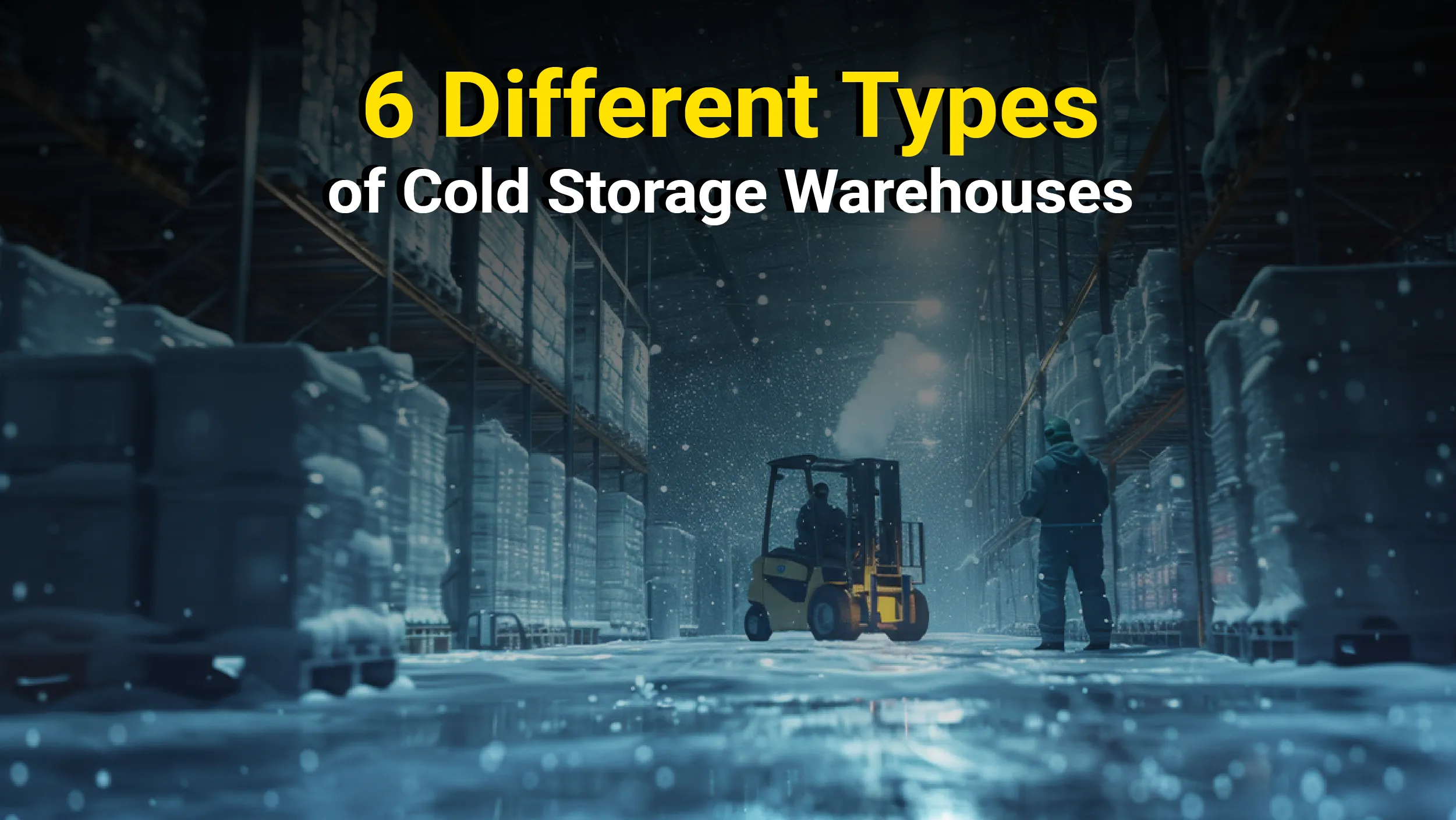Cold storage warehouses are specialized facilities designed to preserve perishable goods at controlled temperatures, playing a critical role in today’s supply chain. As consumer demand for fresh, frozen, and temperature-sensitive products continues to grow, the importance of these warehouses has never been more pronounced.
Demand for cold storage will be fueled by an anticipated increase in e-commerce’s percentage of total food sales in the United States from 13% in 2021 to 21.5% by 2025, especially in the supermarket distribution sector.
From food and beverages to pharmaceuticals and biotechnology, supply chain, etc cold storage solutions ensure that products retain their quality and safety throughout their journey from production to consumption. Let’s learn more about it.
What is a Cold Storage Warehouse?
A cold storage warehouse is a facility where temperature-sensitive products are stored in monitored conditions. These storage facilities are necessary to maintain the quality and increase the shelf life of sensitive goods like frozen meals, fresh produce, and prescription drugs.
Some of the prominent refrigerated cold storage facilities in the world include Los Angeles Cold Storage, Lineage Logistics, Americold Logistics, United States Cold Storage, etc.
Also Read: What Is Procurement Intelligence? Advantages & Disadvantages
6 Different Types of Cold Storage Warehouses

1. Refrigerated Warehouses
Refrigerated warehouses are designed to maintain a controlled temperature environment, typically specific temperatures range between 0°C to 10°C (32°F to 50°F). These facilities are particularly suitable for the storage of perishable items, such as fresh fruits, vegetables, dairy products, and specific pharmaceuticals.
The controlled chilled environment within refrigerated warehouses is crucial for preserving the quality, freshness, and safety of these temperature-sensitive products, ensuring they remain in optimal condition throughout their storage period.
2. Frozen Warehouses
Frozen warehouses are specifically engineered to store products at much lower temperatures, operating at -18°C (0°F) or even colder. These facilities are essential for items that must remain frozen to maintain their integrity, such as frozen foods, ice cream, and certain pharmaceuticals.
The extreme cold temperatures provided by frozen warehouses are vital for preventing spoilage and ensuring that products retain their desired quality and safety standards until they are ready for distribution or use.
3. Ultra-Low Temperature Warehouses
Ultra-low temperature warehouses are specialized storage facilities capable of achieving and maintaining extremely low temperatures, sometimes reaching as low as -50°C (-58°F) or even lower. These warehouses are critical for the storage of products that require extreme cold conditions, including specific types of vaccines and biological samples.
The precise temperature control in ultra-low temperature warehouses ensures the stability and effectiveness of these highly sensitive products, which is essential for their safe and effective use.
4. Port-Centric Cold Storage
Port-centric cold storage warehouses are strategically located near ports to facilitate the storage and management of goods that are either imported or exported. These warehouses are positioned to provide quick and efficient access to shipping routes, which is particularly crucial for maintaining the freshness and quality of perishable goods during transit.
The proximity to ports allows for reduced handling times and faster turnaround, helping to ensure that temperature-sensitive products remain within the required temperature ranges throughout the transportation process.
5. Public vs. Private Cold Storage
Public cold storage facilities are typically managed by third-party logistics companies that offer storage and related services to various businesses. These facilities often provide additional services, such as packaging, inventory management, and distribution, making them a flexible and cost-effective option for businesses that do not require dedicated storage space.
Public cold storage is ideal for companies looking for scalable solutions to meet fluctuating storage needs without the overhead costs associated with owning and operating a private warehouse.
Private cold storage warehouses, on the other hand, are owned and operated by companies that require dedicated storage space for their products. This ownership model allows for greater control over storage conditions, inventory management, and security, enabling businesses to tailor warehouse operations to their specific needs.
Private cold storage is typically chosen by companies with consistent, high-volume storage requirements or those that require specialized handling that may not be available in public facilities.
6. Rack-Supported Warehouses
Rack-supported warehouses are a type of storage facility where the storage racks are integrated into the structural framework of the warehouse itself. This design optimizes the use of space by maximizing vertical storage capacity and improving the overall efficiency of handling temperature-sensitive products.
Rack-supported warehouses are particularly advantageous in cold storage environments, where maintaining the right temperature and maximizing storage density are critical for both operational efficiency and cost-effectiveness.
What Should Be Avoided in Cold Storage?

First and foremost, it is important to reduce temperature swings since they might degrade the quality of perishable items. Strip curtains can help reduce this problem. In addition, air exchange should be restricted when entering cold storage spaces to prevent warm air from entering, which might upset temperature stability.
Maintaining enough space is crucial because overloading storage capacity can impede airflow and cause uneven cooling. Appropriate insulation plays a critical role in preventing heat transfer from the exterior, and routine refrigeration equipment maintenance keeps breakdowns that could lead to temperature variations at bay.
Strict hygiene precautions must be taken to avoid contamination and spoiling, and temperature and humidity monitoring systems must be put in place as soon as possible to enable prompt problem identification.
By avoiding these mistakes, cold storage facilities can run effectively and ensure the security and quality of the goods they store.
Keep Your Goods Cool
Cold storage warehouses play a vital role in the modern supply chain by providing temperature-controlled environments essential for preserving the quality and safety of perishable goods. As consumer demand for fresh and frozen products continues to rise, these specialized facilities have become increasingly important across various industries, including food, pharmaceuticals, and e-commerce.
By employing advanced refrigeration systems and adhering to strict hygiene and operational standards, cold storage warehouses ensure that products remain fresh and safe for consumers. Ultimately, their significance in maintaining product integrity and supporting efficient logistics cannot be overstated, making them a crucial component of today’s globalized market.




